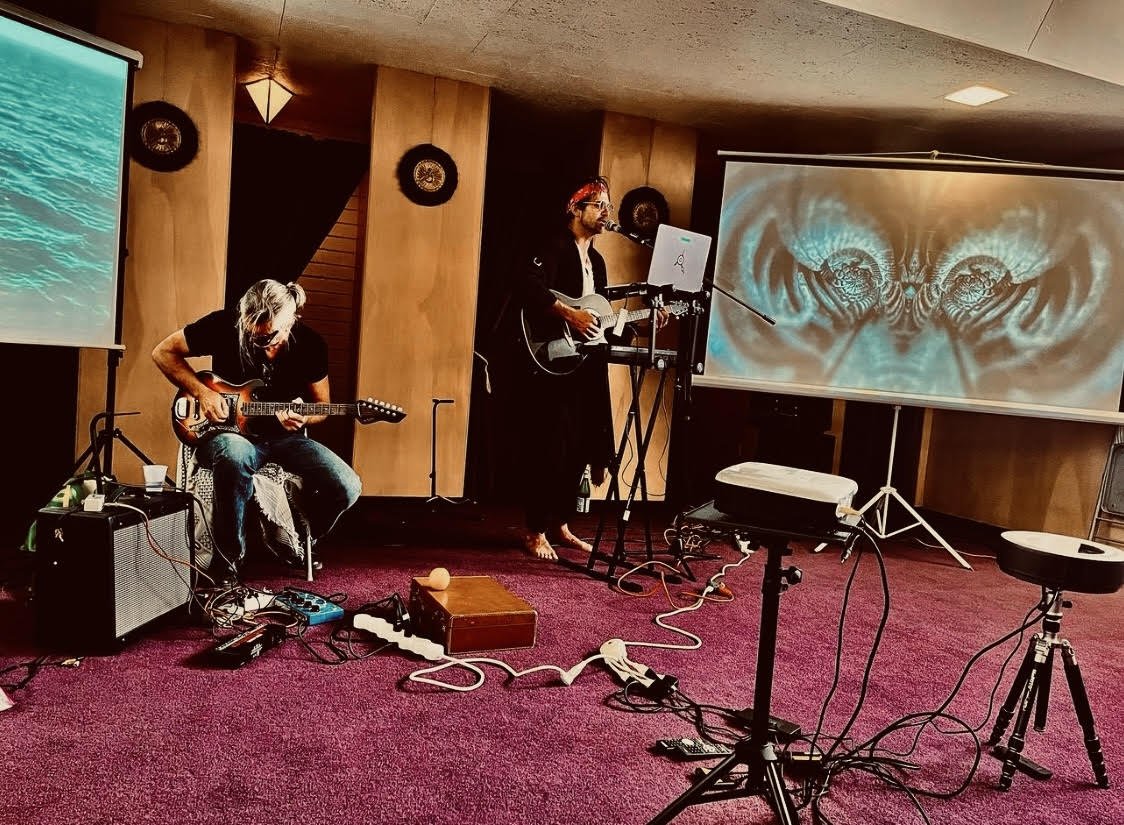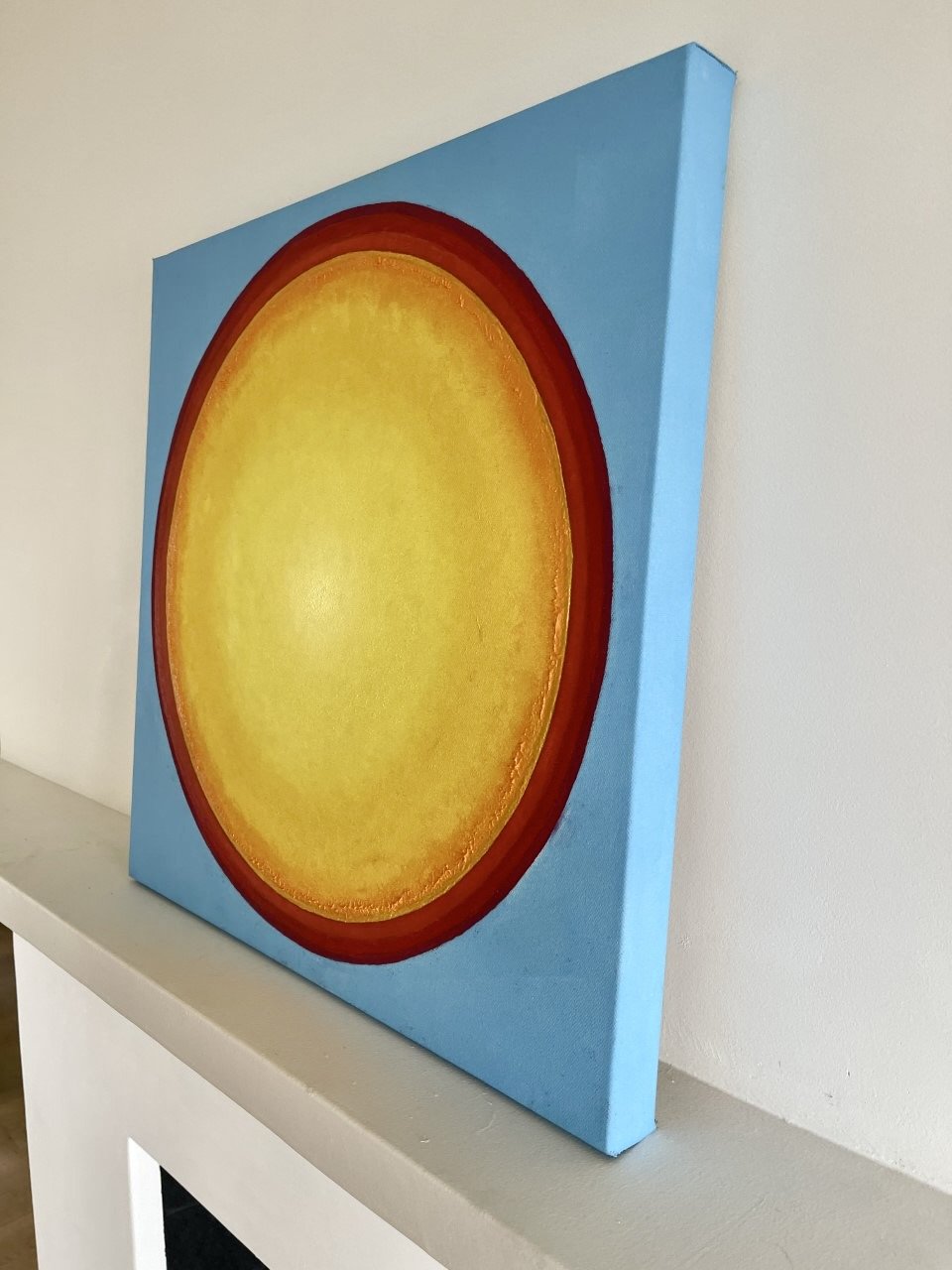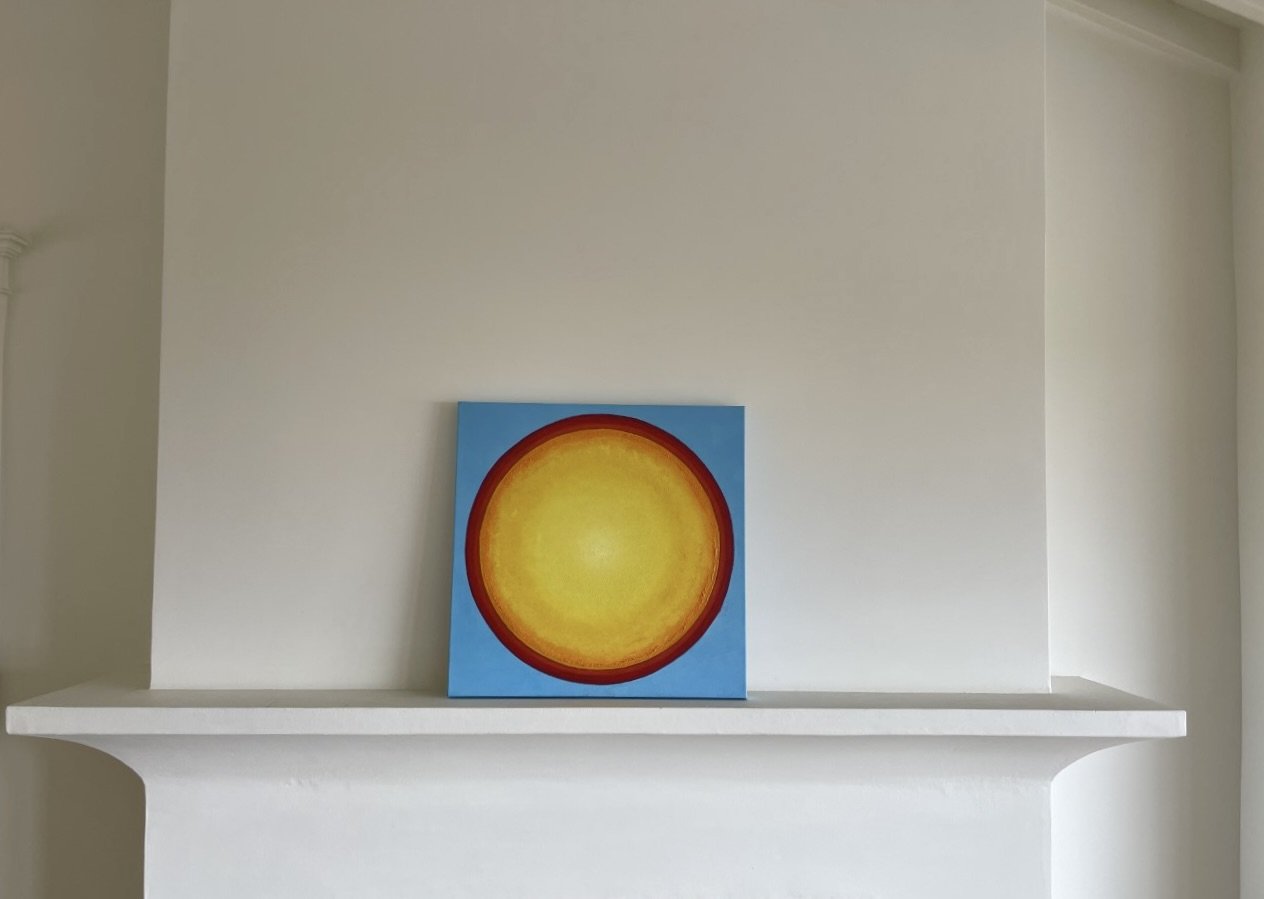5 Doors* is a monthly online magazine/gallery featuring new music, cinema, art, and writing from artist JD RUDOMETKIN and guest artists. It is also a communal space where rituals are curated. * This gallery is best experienced on a desktop/laptop computer.
THE ART OF SELLING A HOME: 12 POINTS OF INTEREST
For 10+ weeks this summer I had 1 goal: Sell my house. This goal was accomplished at the last possible moment. I learned many lessons in the process that I will share with you here. Perhaps you can apply portions of what I learned to your next project or other aspects of your life.
1. VISION + MAGIC
First of all, you have to know what you want. Then, magic happens. Coincidental angels come to assist you. Difficult pieces suddenly fit and unexpected gifts fall into your lap. I could tell you a dozen stories about how various elements came together during this project. Things just kept happening to make it all work out. But before the magic appears, you have to take the first step.
There is an allegory in a holy book where the people had to cross a deep river in order to reach their dreamland on the other side. And god said, “Step into the water.” So, with shaking knees the priests stepped into the river and suddenly the waters parted. The people walked into the promised land on dry ground. There’s something about taking the first step that signals the unseen forces that you are actually down to make it happen. These forces may simply be your subconscious mind or it may be a collective hive mind. Or it could be a divine source. It doesn’t really matter what you call it.
2. SEEK COUNCIL + ADAPT IT TO YOUR WAY OF WORKING
After you have a clear vision, then seek counsel from people you trust who have experience. The first godsend was my friend Clarence who got me thinking clearly. I was complaining about taking time away from art to do the house sell project and he said, “Its only for a short amount of time, and it’s an investment you have spent time with for years.” What he said made so much sense. And yet it felt a bit sterile. And so I decided to make the whole project an art form. I decided to imbue the art spirit in each aspect of preparing the house to hit the market. From the color of the exterior paint chosen to the interior staging of each room. And because I approached it as an art project, my will could bend into it. At that point, the vision had the essential ingredient it needed: A Focused Commitment Infused With Desire.
So, you see, advice helps but you have to put your personal stamp on it so that it moves your soul to act. Otherwise a logical endeavor will feel cold and detached. And, as part of this process, it’s good to know that your ideas are as relevant as those with more experience. In fact, sometimes people with experience fail because their minds are frozen in common laws. So, it’s a challenge to know when to take advice and when to follow your own knowledge and intuition. And you will constantly be asking, “How can I meld this all together in a way that works?” At this point, it's easy to become overwhelmed. But, if you look at it like a puzzle you get to solve, it becomes a lot more fun. And if something fails, oh well. Remember: Regret is a waste of time. Especially when you don’t have a lot of time.
3. CREATE A CLEAR PLAN
After I was committed, I mapped out a 2 page plan with a list of 35-40 tasks that needed to be completed. My friends Gary and Dael who are multi-faceted jacks of all trades agreed to complete the list with me, and so we were all assigned specific tasks. That first week in June, we started in.
Many times during the prep work, I felt overwhelmed. Things would get foggy and unpredictable. At those times, I would sometimes go back and look at the list late at night and feel OK because there was still a basic plan with a definitive overall goal. We did, however, have to adapt the plan almost every single day. And that’s what you have to do to make things work.
4. PIVOT
So many unexpected obstacles appeared. For example, Gary and Dael were not always available. Gary’s mom is off her rocker and Dael’s mom had a rager fit because of an acute pain she was experiencing while in the care home. Then Dael’s van broke down. And beside the mom problems, they both have other jobs. So I had to pivot. I called my nephews. They are 6 foot 6 and 6 foot 7. And these giants came to help paint the chimney and power wash the floor and a bunch of other things. Two giant people on their hands and knees scrubbing the ground for buyers who will never know how hard we all worked to get this home ready for them. But I knew potential buyers would feel the love in the corner where the floor was scrubbed. And the subconscious corner of their mind’s eye would see that there is not one fucking cobweb in any eave. And that’s why they would buy the place at full price. Which they did.
5. TAKE CARE OF THE WORKERS
For many years during various projects I led, the work was more important than the workers. This kind of thinking takes the wind out of everyone’s sails. At the end of the day, when you take your shower alone and wash off the dirt, it’s the relationships that bring meaning. So, you find little things that people love, and you get those things for them. Gary liked blue gatorade, so it was always in the fridge. Dael liked hugs. I tried to hug Dael everyday before he left. These guys are angels. And they know how to lighten the mood with jokes and strange stories. If it’s always a serious goal, it becomes a real drag and nobody wants to come back to work. You gotta have as much fun as possible in hell.
And part of what everybody wants is to be heard. To have creative input. People love to come up with new ideas or tried and true ways of doing things to solve problems. When I was a band leader I often made the mistake of stopping a creative groove because what the bandmates were doing fell outside the scope of my vision. I hope I learned my lesson from those band rehearsal days and am now able to let everyones ideas elevate the work.
6. OPEN + HUMBLE
One day my mother came to look around and offer her thoughts. Now, I call myself an artist and I feel I have an aesthetic that works for me. But during the staging part of the process I had become blind to the design in the home. My mom offered advice on the placement of a large sectional couch and a large dining room table for staging. I almost resisted her ideas. But luckily we gave them a try and it was the best possible solution for both rooms. It changed the entire look and feel of the home, bringing warmth, cohesion and better spacing.
Just about everyone who came to work on the project had an idea about how to do various tasks. And it felt good to allow them to share their ideas and see them light up when a new design concept or work solution entered their mind. The spirit of collaboration has the chance of elevating a project because you have more minds at work.
And as I look back now, I realize one of the most enjoyable parts of this project was the people I got to work with. For example, I was able to get to know my nephews better. If you want to connect with someone, work on a project together. Share a common goal. I’ll never forget when my nephew Max figured out how he and his brother Nick could use the shop vacuum to suck up the water when they used the power washer on the cement floor inside the annex studio room. We no longer had to scrub that floor on our hands and knees. We all got excited about that.
7. HOW TO BE FREE IN HELL
I have to admit, I was a nervous wreck most of the time during this whole process. And that’s because I like order and knowing what will happen. And most of the 10+ weeks felt like bloody chaos and constant pivoting. And at some point I began wondering if I somehow actually liked the challenge of bringing order to the chaos. But it just about broke me several times. And here’s what I would have done differently in order to have more fun.
Organize staging areas and ask all the workers to clean up every day before they leave. Gary did this the first day. But after that it was 8 weeks of shit everywhere until I finally cleaned up the entire place and designated staging areas. That was a massive relief. Not everyone has the same idea of what clean means. And often inexperienced workers do not know how to organize and clean up. You have to show them. And its worth your time and energy to demonstrate how to do this. If you like chaos and drama, don’t worry, there will still be plenty of that everyday as you are trying to figure things out. But at least you won’t spend 10 minutes each day looking for the fucking hammer or nearly face plant into the blade of a randomly placed table saw.
9. MAINTAIN A LEAST ONE CLEAN, ORGANIZED SPACE
Also, I had to sleep and eat in the home while all this was happening. And at one point I lost my shit because there was not one single place in the house that was not a complete mess. Some people can live this way. I cannot. Eventually I figured out that if I can at least keep the kitchen and a sleeping area clean, they won’t take me to the asylum. So, I did that. And as far as I can tell, sanity remains.
In a world of chaos, creating a small space where order exists can save your life.
10. SILENT 10
All of these things kept me sane, but barely. I must admit that the one thing I did not master was a relentless anxiety that seemed to always be riding below the surface. It nested in my chest. I could feel it like a giant squid wrapping itself around my heart. And during this project I never did consistently figure out how to release that tension. Part of me believes it was needed to drive the project forward. And for that I am thankful. The property closed on a Friday and I had to be at work 500 miles away the following Monday. Somehow it all worked out. But if I ever commit my will to a project like this again, I want to be sure to figure out how to stay calm internally despite looming deadlines and perpetual uncertainty. Again, I humbly admit, I did not quite get that one completely figured out. However, I did do a few things that allowed me to feel more comfortable in the process. And I think these are worth sharing.
In addition to becoming more organized and creating clean spaces, I spent time with friends and family and rode my bike beside the river every night. That brought balance. Fun is often underrated.
Another thing I did was develop a new strategy for beginning the day. I called it “Silent 10.” What I did was write out a general idea about what I wanted to focus on. In this case the first one was usually “Sell the home.” I would then set the timer for 10 minutes. During this timed “meditation” session I would allow the idea to marinate. And as I pondered specific tasks for the day, solutions would emerge from the silence. It felt like a graceful way to problem solve. I think this time of quiet reflection allowed us all to save a lot of time and energy.
11. LET GO OF SHIT YOU DON’T NEED
I must have taken 10-15 large boxes of stuff to the curb to give to whomever wanted it in the neighborhood—from fairly decent kitchenware to finely crafted furniture. Human vultures and opportunists descended on the curb stack and cleared the pile everyday. It was amusing to participate in the experiment. Some of the items had an emotional pull and were difficult to release. But I doubt I will miss a single thing. In fact, when I finally did have the house completely clean and ready to show, it was in a state of minimalist design. And it felt freeing. It informed me about how I really want to live in my new home.
12. GIVE THANKS
One task that was a massive undertaking was moving a 30 foot vintage aluminum trailer that had the tongue facing the house. Before hauling the trailer away, we had to get it out of the side yard. I needed a specialized dolly to move the RV. It was amazing that I finally found a person with one of these specialized dollies who actually let me rent it from him. Once Gary, my dear friend Andrew and I were able to get the beast to the street, it was ready for pick up. A couple days later my generous older brother Ron brought his friend with a massive Ford F250 to tug it to a temporary landing place. I will never forget seeing that massive silver beast being pulled away and feeling so thankful to everyone who made it happen. When people do kind things for you like that, you never forget.
The day before I left, my 17 year old nephew and I loaded up my truck. Then I had to unload and repack it with my 84 year old mom helping out. Jeez. I know. And as I headed south on California 99 on Saturday morning I felt an enormous sense of relief and gratitude. I began going through a list of all the people that helped me. And I said their names out loud and thanked them all as hit the 99 out of tow. From workers to real estate agents to friends that offered good advice and friendship and I gave thanks to the trees and rivers that brought me back to life so many times during this summer art project. The gratitude list was longer than I expected. And this accounting of contributors allowed me to realize that there are so many things in life that we cannot do alone. We all need help along the way. And it’s usually more fun to work together anyway.
If 5Doors enriches your life in some way, please consider supporting it with a donation. Thank you kindly for your patronage, which allows us to continue sharing this work with you.
2022-23 Archives Below
- January 2022
- February 2022
- March 2022
- April 2022
- May 2022
- June 2022
- July 2022
- August 2022
- September 2022
- October 2022
- November 2022
- December 2022
- January 2023
- February 2023
- March 2023
- April 2023
- May 2023
- June 2023
- July 2023
- August 2023
- September 2023
- October 2023
- November 2023
- December 2023
- January 2024
- February 2024
- March 2024
- April 2024
- May 2024
- June 2024
- July 2024
- August 2024
- September 2024
- October 2024
- November 2024
- December 2024














